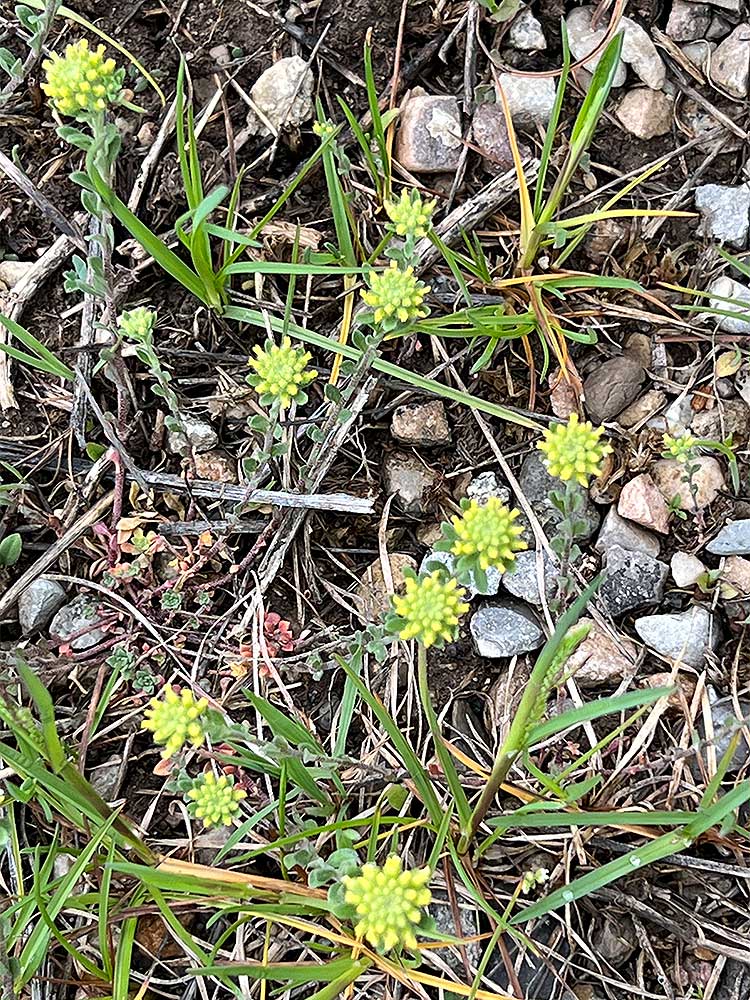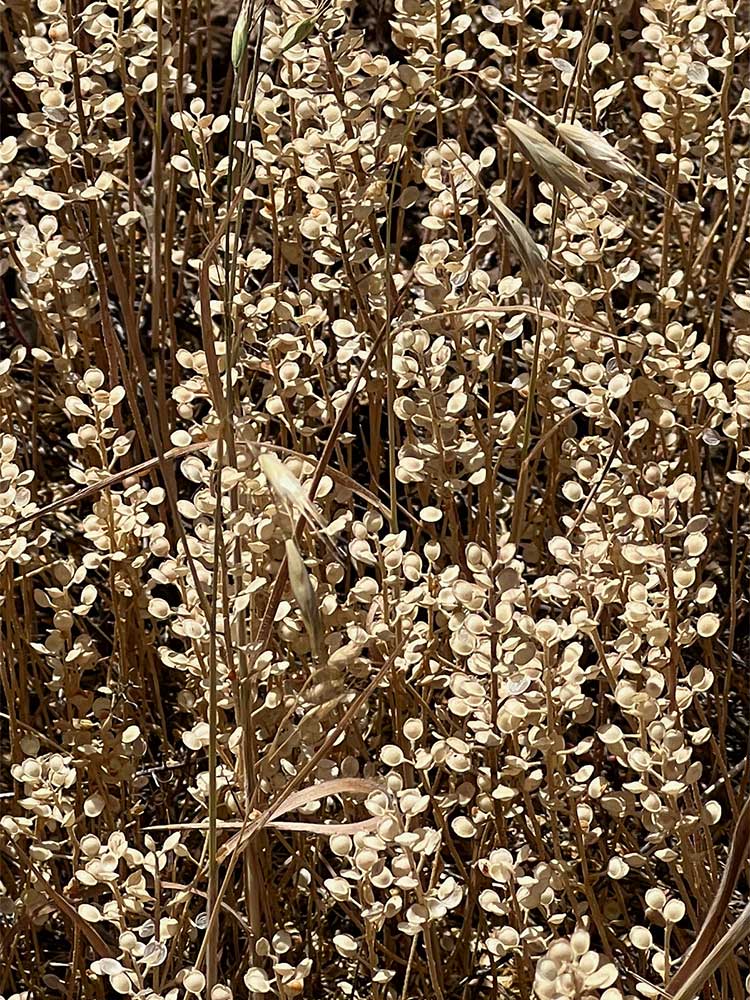Alyssum desertorum / desert madwort
- short crucifer with teeny leaves, no basal rosettes
- short inflorescence with numerous teeny yellow flowers… short-lived
- seed capsules mature by mid-July, ca. 40/stalk
- disturbed sites of any kind
- often in dense populations
Also known as: desert alyssum, dwarf alyssum
Synonyms: Alyssum minimum, Psilomema minimum, Alyssum sartorii
Desert madwort is a hairy annual herb. It is short (2-8″) with teeny yellow/white flowers. Being a crucifer, the flowers each have 4 petals. In this case, each is less than 1/8″ long, round, and blunt or notch-tipped.
The flowers are clustered on racemes (about 4″ long) with 30-40 flowers peer cluster. They open from the bottom upward. The petals and sepals are both dropped soon after flowering starts. Flowering is from early spring to mid-summer with seeds dispersed at that time.
For most of the year, the main visible thing is the fruiting pods (siliciles). These are only about 1/8″ in diameter and circular with a shallow notch at the tip. They are sort of puffed up with flattened edges. Each silicle contains two chambers, each with two seeds. Interestingly, seed production is greatest where the climate is most harsh, i.e. cold winters and hot, dry summers.
Desert madwort leaves are linear in shape, less than ¼” long and less than 1/8″ wide. The entire plant is covered by stellate trichomes (branched hairs), giving the it a grayish appearance. Several branched stems may grow from the base of each plant.
This plant was brought to North America for medicinal purposes, well after people should have known better. Similar to in its native range, it grows in disturbed soils of deserts, rocky areas, grasslands, roadsides, streambanks, meadows, sagebrush flats, and cropland. Basically anywhere the seeds can get and there is light.
The seeds and foliage are eaten by harvester ants and pronghorn antelope, by rabbits and sage-grouse. In the GYE, they are a consistent part of pronghorns’ winter diets, and whatever they don’t eat, the ants do… like 100%.
| Color | |
|---|---|
| Family | |
| Blossom size | |
| Inflorescence size | |
| Inflorescence type | |
| When? | |
| Where? |




